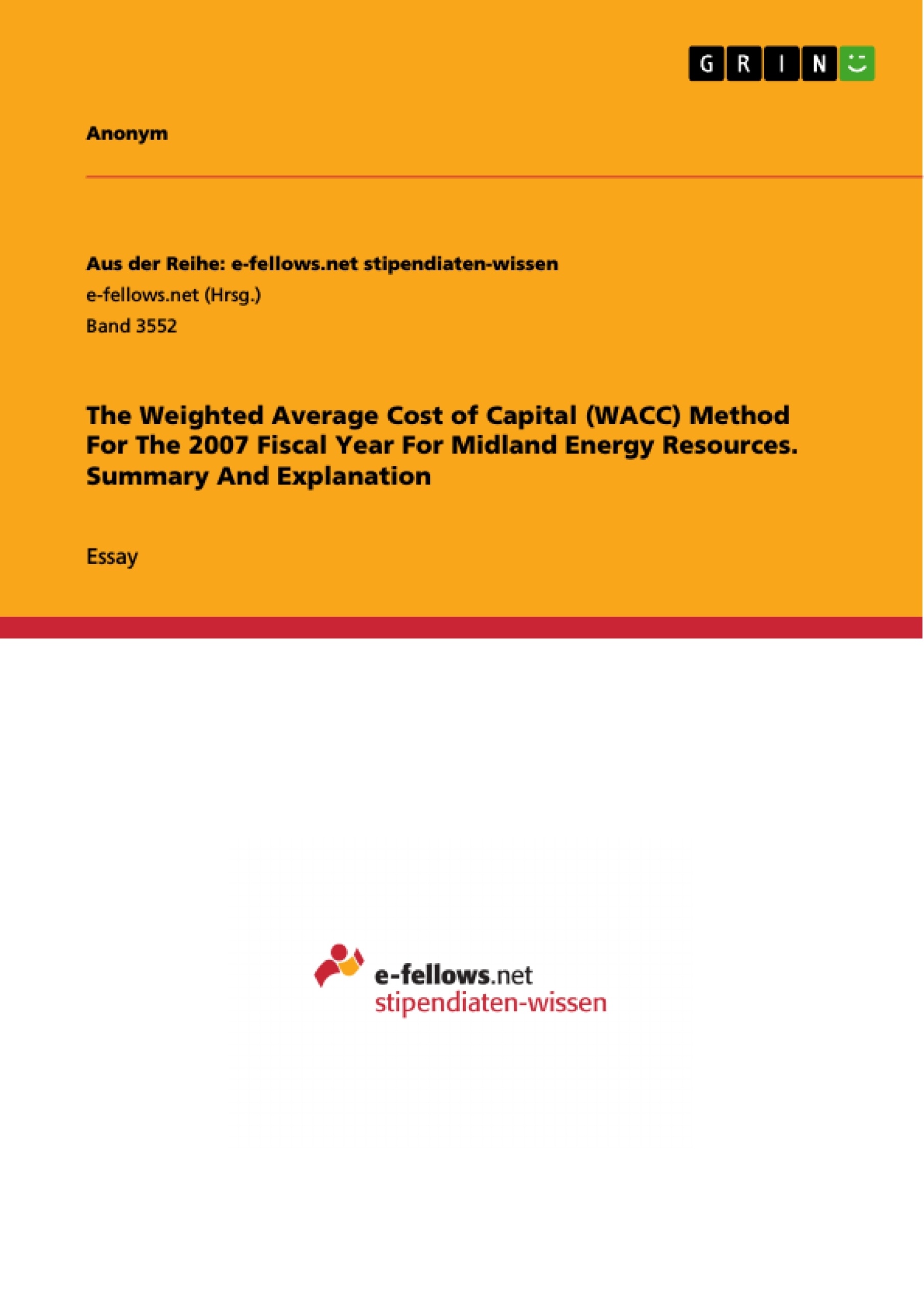The following paper examines the cost of capital for the 2007 fiscal year for both the overall company and each division individually. The WACC method yields estimate for the firm’s cost of capital of 8,17%, whilst divisional estimates are as follows: E&P 8,15%, R&M 9,03%, Petchem 6,89%. This is relatively lower in comparison to companies such as BP (11% in 2007, 10% in 2006) (BP plc 2007 Annual Report and Accounts, p58), but in line with with 2019 data on the integrated oil & gas industry (8,57%) as per Damodaran (2019).
Midland Energy Resources ("MER" or "Midland") is an integrated oil & gas company, with operations comprising exploration and production ("E&P" or "upstream"), refining and marketing ("R&M") and petrochemicals ("Petchem"). Operating revenue and income for 2006 was $248.5bn (E&P: $22,4bn, R&M: $203,0bn, Petchem: $23,2bn) and $42,2bn, respectively. As part of its annual review process, the company estimates its cost of capital. The paper is based on a Harvard Business School case study.
Inhaltsverzeichnis (Table of Contents)
- Executive Summary
- The Cost of Capital
- The Cost of Debt
- The Cost of Equity
- Beta Estimation
Zielsetzung und Themenschwerpunkte (Objectives and Key Themes)
This report examines the cost of capital for the 2007 fiscal year for both Midland Energy Resources as a whole and its individual divisions, namely exploration and production, refining and marketing, and petrochemicals. It analyzes the key components of the cost of capital, including the cost of debt and equity, and explores the impact of leverage, tax rates, and risk-free rates on the overall cost of capital.
- Determining the cost of capital for Midland Energy Resources.
- Examining the factors influencing the cost of capital, including leverage, tax rates, and risk-free rates.
- Analyzing the cost of debt and equity for each division of Midland Energy Resources.
- Assessing the impact of varying divisional characteristics on the cost of capital.
- Exploring the implications of these findings for investment decisions and performance evaluation.
Zusammenfassung der Kapitel (Chapter Summaries)
The report begins by introducing the concept of the cost of capital and its relevance for investment decisions. It explains the WACC method and its key assumptions, highlighting the importance of the CAPM model in determining the cost of equity. The chapter then examines the cost of debt, exploring the factors influencing the interest rate paid on MER's debt and the impact of taxes on the cost of debt.
The following chapter focuses on the cost of equity, examining the role of the equity market risk premium and the beta in determining the cost of equity for MER. It also discusses different approaches to estimating the beta and their applicability in the case of Midland Energy Resources.
Schlüsselwörter (Keywords)
The key focus topics of this report are cost of capital, WACC, cost of debt, cost of equity, CAPM, beta, leverage, tax rate, risk-free rate, and divisional analysis. The report explores these concepts in the context of Midland Energy Resources, an integrated oil & gas company with operations across exploration and production, refining and marketing, and petrochemicals. The analysis highlights the importance of these key factors in understanding and managing the cost of capital for a firm.
- Citar trabajo
- Anonym (Autor), 2019, The Weighted Average Cost of Capital (WACC) Method For The 2007 Fiscal Year For Midland Energy Resources. Summary And Explanation, Múnich, GRIN Verlag, https://www.grin.com/document/899522



